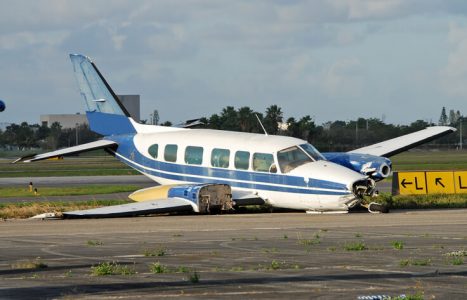Recent Runway Excursion Incidents
The recent incident of a HondaJets runway excursion has caused understandable anxiety among pilots and company owners. In response to the latest event in Summerville, South Carolina, Jet It has temporarily grounded their entire fleet of HondaJets. Thankfully, everyone on board the recently affected plane survived with no injuries.
It’s worrying to note that 25 incidents and accidents, including 7 substantial damages, occurred involving HondaJets since 2015, and many of which were caused by runway excursions. Experts could not find any causal effects from the aircraft’s design or any system malfunction regarding the closed investigations of previous events. More research and discussion will determine the path forward for Jet It and HondaJets safety.
Causes of Runway Excursion
There are many various ways runway excursion can happen, including:
- Hydroplaning: This occurs when an aircraft lands on a wet runway and loses traction due to the buildup of water between the tires and runway surface.
- Preventative Measures: Pilots should be aware of runway conditions before landing, maintain proper approach speeds, and apply brakes appropriately to ensure they do not hydroplane.
- Tailwind Landings: When an aircraft lands with a tailwind, it increases the aircraft’s ground speed, making it more difficult to stop on a shorter runway.
- Preventative Measures: Pilots should check the wind direction and velocity before landing, and airports should ensure that runways are long enough to accommodate tailwind landings.
- Unstable Approaches: An unstable approach is when an aircraft is too high, too low, or too fast approaching the runway, making it difficult to land safely.
- Preventative Measures: Pilots should be trained to recognize and abort unstable approaches and should follow proper landing procedures.
Avoiding Runway Excursions
Knowing potential causes of runway excursions doesn’t mean they will not happen. Below are a few tips to help minimize the occurrence of runway excursions:
- Conduct a thorough pre-flight inspection of the aircraft to ensure all systems are functioning correctly, including brakes, tires, and steering.
- Review airport charts and runway conditions before landing or takeoff to properly plan landing and takeoff procedures.
- Maintain constant situational awareness throughout the flight, keeping track of weather conditions, runway conditions, and other factors that may affect the aircraft’s safety.
- Utilize checklists to ensure that all procedures are followed correctly and in the right order.
- Carefully monitor air traffic control communications to be aware of any unexpected changes or obstacles on the runway or in the air.
- Know and understand the most common indicators for runway excursions, such as hydroplaning, tailwind landings, and unstable approaches.
- Maintain a safe approach speed and ensure that it is appropriate for the runway length and condition.
- Be prepared to abort a landing if necessary, especially in the case of unsafe landing conditions or other hazards on the runway.
- Follow proper landing and takeoff procedures, including maintaining proper pitch and power settings and using flaps appropriately.
- Seek additional training or guidance if needed to improve skills and knowledge related to runway excursions.
To ensure safety in aviation, it is important that all pilots, irrespective of their aircraft, adhere to runway excursion avoidance recommendations. To maintain proficiency and promote safety, pilot training should include coverage of these items on a yearly basis. It’s essential to receive yearly training that covers all relevant safety procedures to ensure optimal performance. By committing to these extra measures, we can reduce the occurrence of safety incidents in the air. Let’s work together to prioritize aviation safety.
RELATED CTS TRAINING










